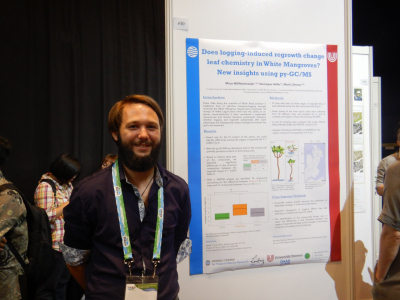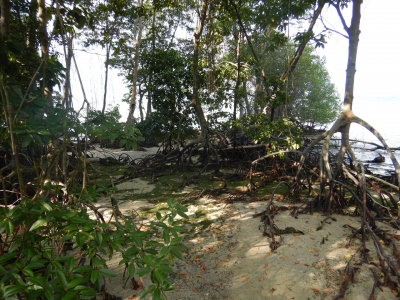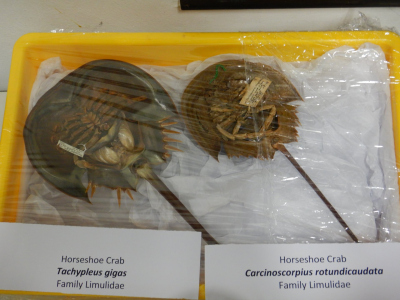- Graduate School GLOMAR
- PhD student reports
- Conference Reports
- Conference Reports 2019
- Mirco Wölfelschneider
Mirco Wölfelschneider
Report of GLOMAR PhD student Mirco Wölfelschneider about his participation in the 5th Mangrove Macrobenthos & Management meeting - MMM5, in Singapore from 01 - 05 July 2019
The 5th Mangrove Macrobenthos & Management meeting - MMM5 - took place from the 1st until the 5th of July at the Joyden Hall in Singapore. The conference exclusively on topics related to mangrove research is the 5th in the series and by far the biggest of its kind. The MMM5 was accompanied by a pre-meeting of the IUCN mangrove specialist group and a post-conference writing workshop at Pulau Tioman in Malaysia the week after.
Hundreds of scientist in all carrier stages ranging from Bachelor student to the big names in mangrove research, such as Dr. Jurgenne Primavera from the Zoological Society of London at the Philippines and Professor Shing Yip (Joe) Lee from the Chinese University of Hong Kong. Even a high school student working on mapping the extends of mangrove forests was invited to present her interesting work in front of specialists from all over the world. As I am working in my PhD project on connectivity between mangrove forests and adjacent terrestrial and marine ecosystems it was a great chance for me to present of my work on “Does logging induced regrowth changes leaf chemistry in White Mangroves?: New insights using Pyro-GC/MS” in the poster session on “Impacts of People on Mangrove Structure and Function”. Three of the five conference days where opened by keynote speakers giving talks on mangrove rehabilitation in the Philippines, consequences of losing functional mangrove forests for people and nature, and changes mangroves will face with rising sea levels. A highlight in the middle of the week were the embedded field trips with various foci, ranging from macrobenthic species identification courses over management discussions to a botanical exploration in the mangroves of Singapore and Malaysia. The informal atmosphere during the coffee and lunch breaks allowed fruitful discussions on a great variety of topics between scientists with all kinds of different backgrounds. As all participants shared the passion for mangroves, it was a great and comparatively easy opportunity to expand networks and establish foundations for potential collaborations in the future. A nice addition to a traditional scientific conference design was the presence of several national and international NGOs, such as WWF, enriching the scene with perspectives and contributions a researcher might not think of intuitively.
Overall, I am very grateful that I had the chance to present at THE international conference on mangrove research. Especially as it was my first international conference in Southeast Asia. I can only recommend the next conference of the MMM series to everyone who is interested in mangrove research and is as passionate with the trees growing by the sea as all participants are. Last but not least I want to thank the University of Bremen and my supervisors for making my attendance at the MMM5 possible.





